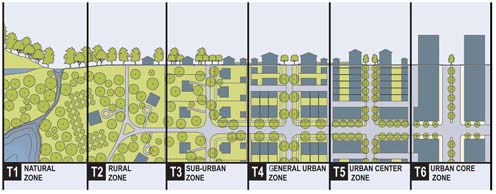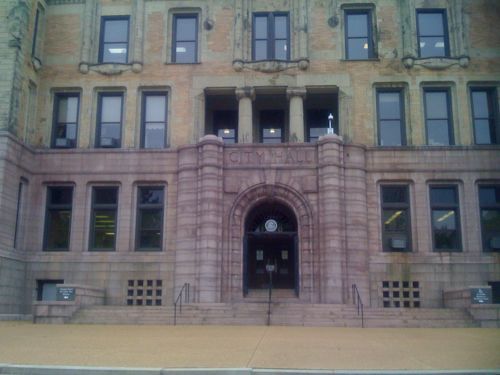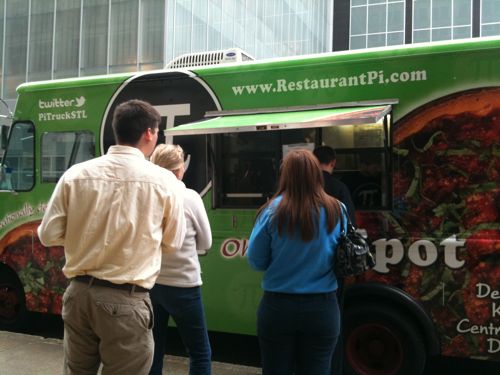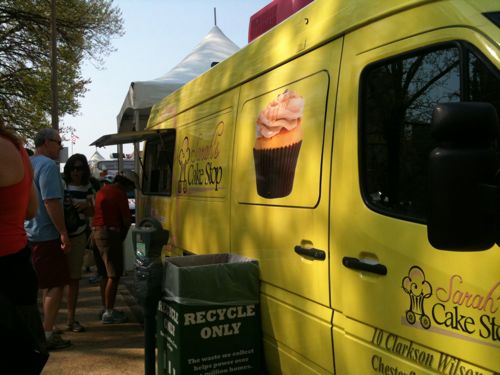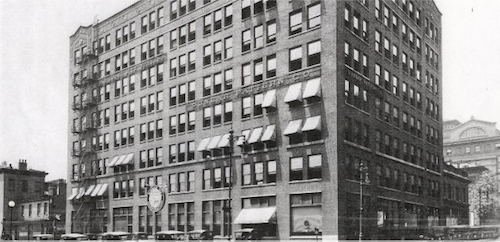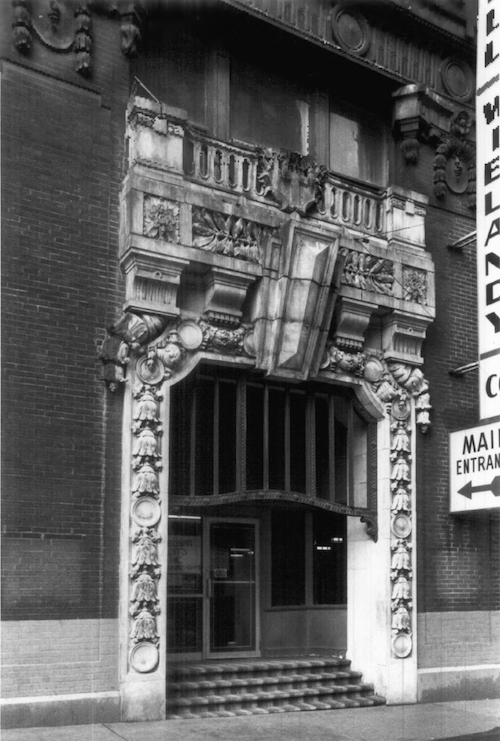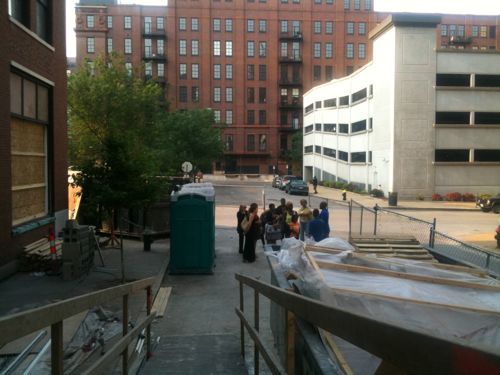Readers Sympathetic to Homeless Residents of Riverfront Tent Camps
|
|
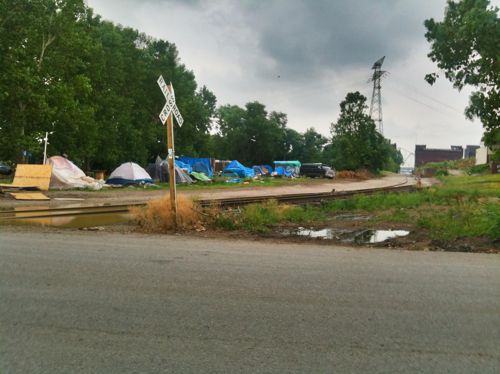
Visiting the “Hopeville” camp recently was one of the most depressing experiences in recent memory for me. Â I can’t imagine living that way, but I’m a bit spoiled. Â I did get a sense of community in the 2+ hours I was there from things such as two raised planter beds with flowers, tomatoes, peppers and herbs.
An organization has a good list of the Types of Homelessness:
People are homeless for diverse reasons. Because of this, a one-size-fits-all formula for homelessness does not exist. Listed below are the six main types of homelessness that we have identified in our work with the homeless since 1984.
Short-Term Houselessness: When a traumatic event occurs such as a house fire or natural disaster, people with positive relational resources, solid inner resources & sufficient physical resources are able to recover in a short period of time, usually within 30 days.
Long-Term Houselessness: Much like Short-Term Houselessness, the loss of a house is the result of an unforeseen event, except in this situation the people who are affected have modest physical resources which lengthens the amount of time it takes to recover, sometimes up to 120 days.
Permanently Supported Homelessness: The Permanently-Supported Homeless population lacks both relational & inner resources due to mental or physical disability & must rely upon outside resources to provide the goods & services needed to sustain life.
Near Homelessness: Those in the Near Homeless category have overextended their personal support systems, which keeps them on the brink of homelessness. Literally “one paycheck away from homelessness,†these folks cannot withstand any type of setback. The loss of a job, roommate, or vehicle can easily push them over the edge.
Self-Induced Homelessness: Self-induced homeless persons reject their relational resources by refusing to cooperate or submit to any form of authority. As a result, they are unable to maintain housing, employment or any type of productive relationship.
Environmentally Dysfunctional Homelessness: This segment of the homeless population has experienced a series of traumatic events, often a result of the toxic environment in which they were exposed. Broken, dysfunctional or non-existent relational resources have severely weakened their inner resources making it almost impossible for them to sustain the physical resources needed for stability. War Veterans can fall into this type of homelessness when their inner resources are unable to withstand the traumatic events of war.
I got the feeling that some individuals living in the camp don’t want permanent housing. Â Most used to live in the now demolished railroad tunnel under N. Tucker. There they weren’t visible and they were more protected from the elements. Â But now we see them, an unsettling situation to some. Â To me it is a fact of life that a small percentage of any population will be homeless by choice or due to mental illness, addiction or other factors.
To pare $7 million from its $23 billion budget, the state cut loose more than 4,000 Missourians with mental illness who had depended on the emergency rooms and 88 in-patient beds at these facilities. The curtain was brought down abruptly and amid great uncertainty over where this vulnerable population would go — or could be taken — in times of crisis. (STLtoday.com)
In the poll last week readers got to weigh in on the issue:
Q:Â What, if anything, should St. Louis do about the homeless camps on the north riverfront?
- Provide alternate land to use that has running water,power, restrooms and some shelters (ie: campground) 20 [15.27%]
- Force them to leave immediately 17 [12.98%]
- Offer them annual lease option from City of St. Louis. Lease would require sub-leases with all residents. Rent would be paid with required volunteer service. 17 [12.98%]
- House them in safe supportive apartments 17 [12.98%]
- Put them on a bus to somewhere else 15 [11.45%]
- Nothing 12 [9.16%]
- Allow them to remain but charge for trash service and cite for maintenance violations 10 [7.63%]
- Fund more emergency / transitional housing 9 [6.87%]
- Arrest them for trespassing 5 [3.82%]
- Other answer… 5 [3.82%]
- Provide services to make them more comfortable 4 [3.05%]
Fifteen people picked to bus the homeless elsewhere, they must not realize that St. Louis is where other cities in the region send their homeless. The safe & supportive housing option also isn’t realistic with this group unless you want to lock them up to make sure they stay. So what do you do? I think a campground with some basics is a good idea. Â This is also an idea that Larry Rice supports, which makes me question my own support.
The “other” answers supplied by readers were:
- crappers
- Pub. housing in exch. 4 comm. service
- teach them to do the “thriller” dance as a group, then use internet pr
- Bus them to the county.
- Get the county and others to help fund and participate in a solution.
There are portable toilets on site. The Thriller dance idea is humorous but not sure how it would help them.
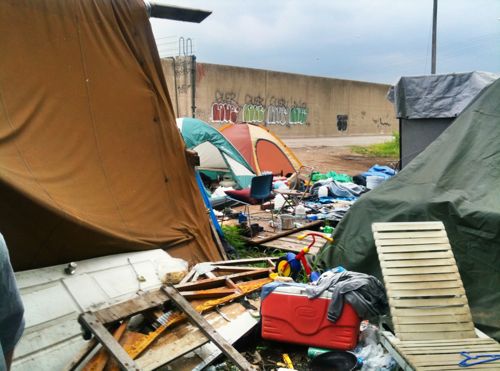
Last week HUD released the 200+ page 2010 Annual Homeless Assessment Report:
More than 1.59 million people spent at least 1 night in an emergency shelter or transitional housing program during the 2010 AHAR reporting period, a 2.2 percent increase from 2009. Most users of homeless shelters used only emergency shelter (78.7 percent), while 17 percent used only transitional housing, and less than 5 percent used both emergency shelter and transitional housing during the reporting period.
Those who are homeless are that way due to many factors. Â To the family who find themselves homeless due to a foreclosure require a different solution than the individual who can’t stay sober.
The land currently being used is owned by the City of St. Louis, although records indicate part is leased to electric utility Ameren. I have no idea if water &/or sewer lines exist in the area but a slightly more orderly campground might be the best solution for the less than 100 people at three camps near the floodwall.
– Steve Patterson

